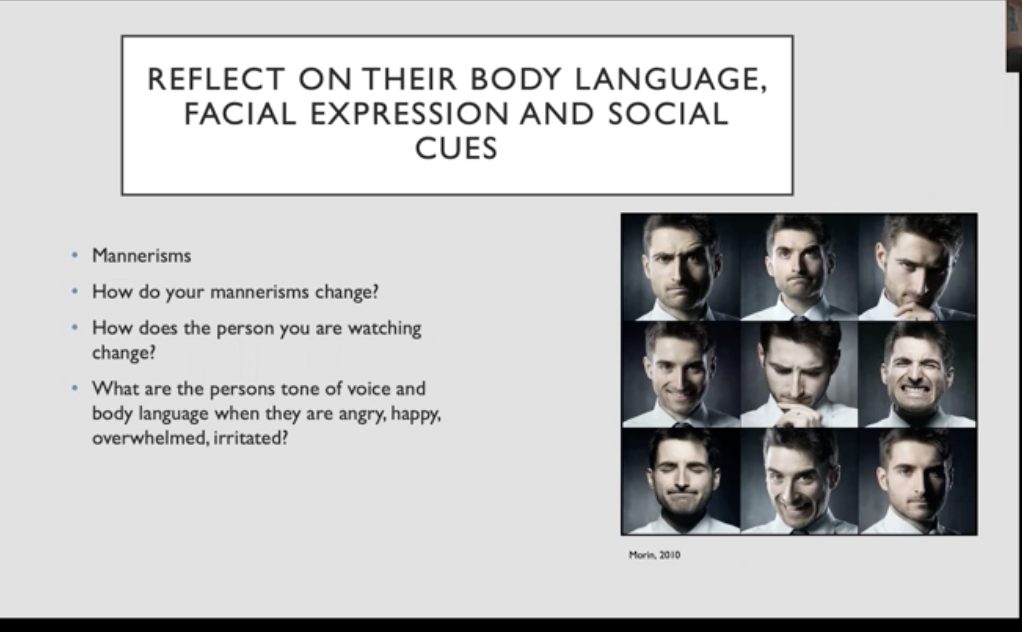How Adept Are You at Reading the Room?

The Importance of Tailoring Messages
Have you ever mis-spoken? Have you mistakenly hurt, offended or alienated someone?
More than likely, you answer yes. And more than likely, you regret it and wish you could change that interaction.
Tailoring messages and our contributions is important because it builds community and friendships.
Reading the Room
It is important to learn how to scan the space and environment for verbal and nonverbal energy, words or dynamics. Why? So we can tailor our messages.
Stress impacts our ability to read the room. We are all under stress due to the uncertainty associated with the pandemic and the political environment. Reading the room right now may be different than it was before so taking others’ perspective is more important now than before. The good news is you can work on this both virtually and in person.
Reading the Room comes easily for some, and less easily for others.
How to Read the Room Today in Our Current Climate:
- Keep the camera on – If you struggle with reading the room or you feel your organization is super complicated, use the visual cues to monitor your participation.
- Perspective Taking – consider others’ perspectives by doing an “inventory”. Kids love this too. Imagine the people in your life. What are their thoughts, insights, values? Try to walk in their shoes. Who is this person? What do I know about them? What is important to them? How should I address them and tailor my message in hopes of it being received?
- Observe – allow yourself to observe rather than feeling the need to contribute. Check out facial expressions, mannerisms, delivery, words, mood and context. Being a spy, or observer, is one of the best ways to read the room.
- Practice – Pick one mission to avoid overwhelm. For example, you may decide that you will try to interpret body language and facial expressions only rather than trying to observe everything.
Questions From Adults:
Q: I have a hard time with fast-paced conversations. How can I become more adept at absorbing the dialog faster so I can respond more quickly?
A: I recommend that you practice jumping in and making chit chat. Start with family and friends. Also I have noticed that most people think they are delayed while others may not notice a delay. Count how many beats it takes to respond. Also, ask questions. People love to talk about themselves and this gives you time to think and prepare.
Q: How to a read poker face?
A: Use your spy skills and open questions to try to better understand the other party. Some “poker faces” are harder to interpret, so just try your best.
 Q: In what ways does wearing a mask wearing and social distancing impact people?
Q: In what ways does wearing a mask wearing and social distancing impact people?
A: We must recognize that we are in a “new normal”. Without a doubt, COVID has changed the way we can communicate and engage, but I urge you to continue to stay connected, even if it needs to be outdoors, 6 feet apart and with masks.
Q: How do you recommend reading body language via zoom?
A: If you are in charge of the meeting, ask others to leave their cameras on. Listen to tone of voice if camera is on, or off. Specifically ask for further information and feedback if you can’t adequately read the signals. If you are in groups, come up with ways that you all can discuss things more openly. Consider your audience and estimate how they will receive your message(s).
Q: How do you recommend engaging with people we haven’t met before?
A: Without background information to fall back on, I suggest you assume the stance that your audience is tired, besieged, etc. If you come from an extra-conservative approach, the chances of doing something inappropriate lessens. Continue to remind yourself of the messaging and what “brand” you want to portray.
For scripts, tools, advice and actionable exercises on helping children develop social skills, check out Why Will No One Play with Me?



